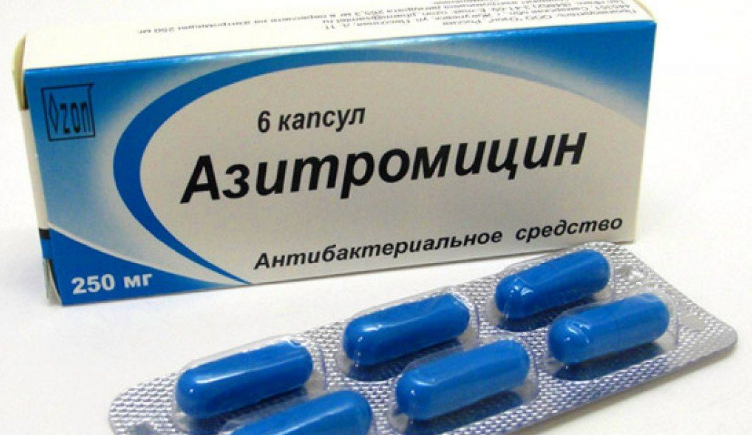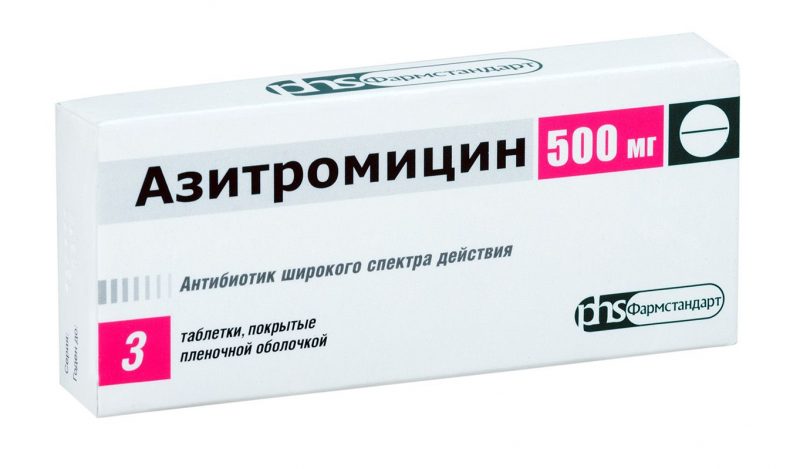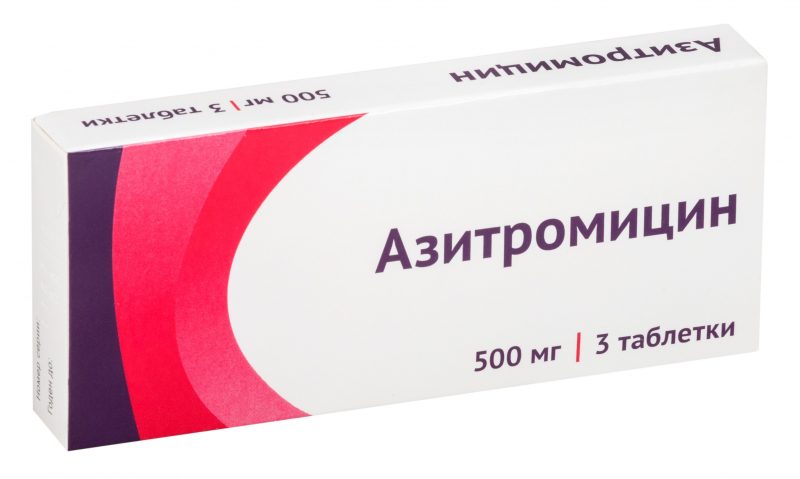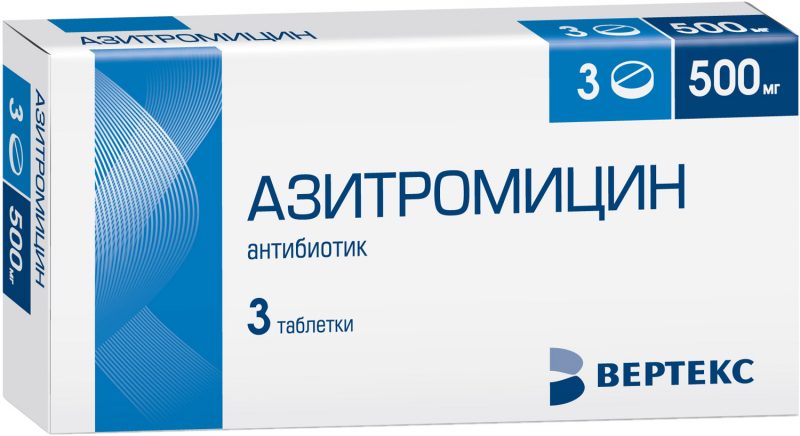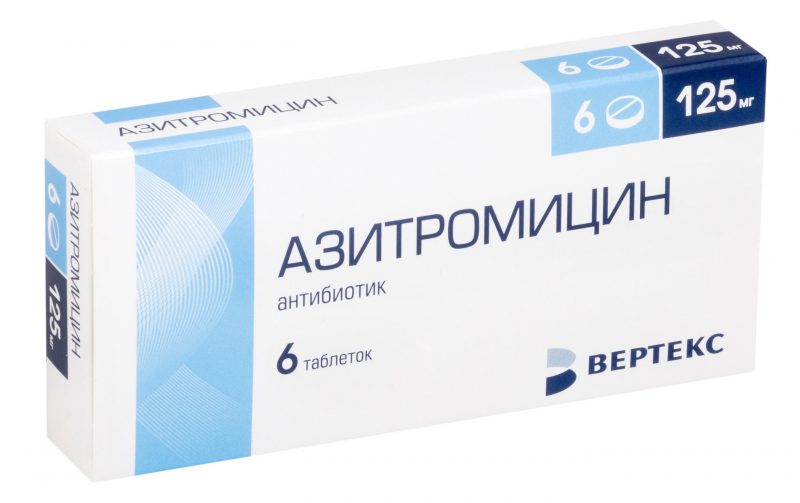The child’s body is always more susceptible to viruses and bacteria, since the child’s immunity is only formed and does not have all the necessary antibodies. Azithromycin for children is a necessary medicine in the medicine cabinet of every family, as it is the best antibiotic in the fight against colds and flu. It will help the fragile body cope with the disease.
Material Content:
Composition (active substance) and release form
Azithromycin is a semi-synthetic antibiotic, a representative of macrolides (a subclass of azalides), which has a slightly different structure and is used to treat infectious diseases. As part of the antibiotic, the active substance is azithromycin. As additional components, glucose, cellulose, sucrose, magnesium and calcium stearate and sodium lauryl sulfate are used.
Depending on the form of release of the drug, its main substance can be in solid or liquid (azithromycin dihydrate) form.
The drug is produced in several medicinal forms:
- granules;
- capsules;
- pills;
- solution for infusion.
Capsules and tablets are available in different doses of the active substance - 150, 250 and 500 mg. Sold in standard blisters for 3-10 pieces. The powder for creating a solution also contains a different amount of active substance - 15, 30 or 75 mg of azithromycin per 1 gram. And in the liquid form of the drug, 500 mg is present in one bottle.
Differences in dosage allow the tool to be used for a wide range of diseases of varying degrees of complexity.This is especially important, because a fragile children's organism is more sensitive to azithromycin and its excessive amount can lead to serious side effects.
Pharmacological properties and indications for use
The main effect of the antibiotic is antibacterial, which allows the drug to suppress cell division of pathogenic microorganisms and their distribution throughout the body.
Azalides (substances of which azithromycin belongs to the class) are able to bind to the ribosomes of bacterial cells and inhibit the division of protein molecules and enzymes, i.e., stop the reproduction and growth of bacteria. In high concentrations, the substance can also have a bactericidal effect. Due to the non-standard structure for macrolides, the antibiotic Azithromycin has an increased resistance to acidic environment, which makes it more effective and allows you to destroy a greater number of pathogenic microorganisms.
Among them, bacteria and fungi:
- gram-positive;
- gram negative;
- anaerobic.
Doctors prescribe Azithromycin to children for the treatment of inflammatory processes of various forms developing in the respiratory tract, gastrointestinal tract, genitourinary system and in the upper layers of the epidermis.
The antibiotic is effective in treating:
- Borreliosis
- inflammatory processes in the respiratory tract, including sinusitis, otitis media, tonsillitis, pharyngitis, laryngitis, bronchitis and pneumonia;
- dermatitis (normal and purulent), as well as other lesions of soft tissues;
- infections in the genitourinary system (urethritis, cervicitis);
- gastrointestinal lesions (in the case of the action of the bacterium Helicobacter pylori);
- erysipelatous transformations.
The only microorganisms resistant to azithromycin are Staphylococcus aureus and gram-positive bacteria that are immune to erythromycin. These microorganisms can be destroyed with an antibiotic, but a too large dose will be needed, which can lead to serious complications in the child. For the same reason, the drug is not used in the cosmetic industry, despite its effectiveness in the fight against heavy and chronic acne.
Age restrictions on admission
Diseases require various therapeutic scenarios, but despite this, the permissible dosage of Azithromycin cannot be exceeded. An antibiotic is a very strong and aggressive drug (which is why it is extremely effective), and can cause serious side effects. The child’s body is weaker, so when treating a child, parents must strictly follow the doctor’s prescription. The recommended age for the use of Azithromycin is 6 years.
Manufacturers have developed several dosage forms of the drug specifically for children, because the usual injections and tablets with capsules are unacceptable for their treatment due to the high concentration of the drug (250-500 mg). In addition to dosage, the form of tablets is also unacceptable for children. They are large and the baby can easily choke on swallowing. Children from 6 years old can take Azithromycin in the form of a syrup and suspension, as well as 125 mg small capsules.
Instructions for use Azithromycin for children
Up to six months, Azithromycin is forbidden to be taken - it can provoke gastric bleeding in the baby. For children older than six months, doctors can prescribe a single dose of 10 mg of the substance, but only in case of acute inflammatory infection, which creates a risk of death for the child.
The dosage of azithromycin for children is different from the adult, because their body is weaker and the drug can have a negative effect.
At the age of 6-12 years, children can be given Azithromycin in solution and suspension. Adolescents over 14 years old are already allowed to use tablets weighing 125-250 mg, and in the case of a severe course of the disease, doctors can double the dosage to a maximum of 500 mg.
Children take the drug orally 1 time per day, regardless of food intake. The suspension is prepared from granules - they are sold in dark bottles.Usually, you need to pour the required amount of clean distilled water into the vial (there is a mark on the bottle) and shake well before each use. In the package with syrup Azithromycin and granules for suspension, there are measuring spoons or syringes that make it easy to measure the desired dose.
Azithromycin 125 mg tablets
The facilitated form of the drug is given to babies in different concentrations based on the diagnosis and the severity of the disease. For inflammation of the respiratory system and soft tissues, children 12 years of age and older take 4 tablets per day (500 mg total dose). Patients 6-12 years old are recommended to take 10 mg per 1 kg of body weight once a day. For diseases of the gastrointestinal tract and infections of the genitourinary system, they take 4 tablets from three to seven days.
Capsules 250 mg
Capsules Azithromycin 250 mg white with a gelatin shell take orally 1 hour before a meal 1 time per day, washed down with plenty of water. They are taken by children over 2 years old with inflammation in the respiratory tract of 0.5 g per day once for 3 days.
With other inflammations:
- Soft tissue - 1 g once in the first day of illness and 0.5 g for the remaining 4 days.
- Genitourinary system - once a day for 1 g.
- GIT - 1 g every day for 3 days.
In case of Lyme disease, it is necessary to give the child 1 g of the drug on the first day of the disease and 0.5 g of the remaining 4 days of the course. Treatment should be under the supervision of a physician and in a dosage strictly prescribed by him. This will help to avoid negative consequences.
Suspension for children
The solution is prepared once for 5 days of administration - 100 mg of the active substance per 5 ml of solution. The package also contains a measuring spoon in 2.5 and 5 ml.
Azithromycin suspension is given to children in the following dosages:
- From six months to a year - 5 mg of the drug per kilogram of the child’s weight once a day for 3 days.
- From a year to three years - 10 mg of medication per 1 kg of body weight once a day for 3 days.
- From 3 years to twelve years - 15 mg of solution per 1 kg of weight 1 time per day for 3 days.
It is best to give children immediately drink the suspension with tea or milk - it has a cloying bittersweet taste.
Contraindications, side effects and overdose
Azithromycin is prohibited for children under 6 months of age and women in the first trimester of pregnancy. In addition, doctors do not recommend drinking it while breastfeeding, since the substance can penetrate through the milk into the body of the baby. The main contraindication to taking the medication is an allergy to its active substance or auxiliary components.
Possible side effects include an allergic reaction (rash, itching, or shortness of breath), gastrointestinal problems (bloating, frustration, constipation), nephritis, palpitations, headaches, sleep disturbances, and general nervousness.
In case of non-compliance with the recommended dosage regimen, an overdose of azithromycin may occur in the patient, which is accompanied by temporary hearing loss, nausea and vomiting. In this case, the antibiotic should be discontinued and symptomatic treatment prescribed.
Analogs of azithromycin
Azithromycin is a fairly effective antibiotic that is used to treat a wide range of diseases. Its cheaper counterpart is Summamed, which contains the same active substance, azithromycin.
If desired, Azithromycin can be replaced:
- Azikar in capsules and granules for suspension;
- Azymed
- Zyromine;
- Zitmakom.
Any change in therapy should be made after the approval of the attending physician. Self-medication can lead to serious health problems and all kinds of complications.
The use of antibiotics in modern medicine makes it possible to quickly and without complications overcome various bacterial attacks, which often affect the developing children's body. Azithromycin is an effective drug that allows the child’s immunity to quickly cope with the infection and develop antibodies to it.


